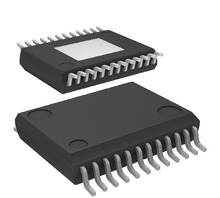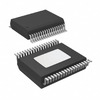Manufacturer Part Number
NCV7719DQAR2G
Manufacturer
onsemi
Introduction
NCV7719DQAR2G is a Power Management Integrated Circuit (PMIC) designed for motor driving applications, specifically catering to brushed DC motors. It integrates both control and power stage functionalities for a compact and efficient solution.
Product Features and Performance
Fully integrated driver for brushed DC motors
Supports half bridge configuration with 8 outputs
SPI interface for control communication
Built on Power MOSFET technology for efficient power handling
Broad supply voltage range from 3.15V to 5.25V
Can drive loads from 5.5V up to 28V
Capable of delivering output current up to 2A
Designed to operate in extreme temperatures ranging from -40°C to 150°C
Product Advantages
High integration reduces the component count and PCB space
Flexible power supply compatibility
Robust output current capability for a wide range of motor sizes
High-temperature operation suitable for automotive and industrial applications
Automotive grade (AEC-Q100 qualified), ensuring reliability in harsh environments
Key Technical Parameters
Supply Voltage: 3.15V ~ 5.25V
Load Voltage: 5.5V ~ 28V
Output Current: 2A
Operating Temperature: -40°C ~ 150°C
Package: 24-LSSOP with Exposed Pad
Interface: SPI
Quality and Safety Features
AEC-Q100 qualification meets automotive reliability standards
Over-temperature protection enhances safety under fault conditions
Compatibility
SPI interface ensures compatibility with a broad range of microcontrollers
Application Areas
General-purpose applications across automotive, industrial, and consumer electronics sectors where brushed DC motor control is needed
Product Lifecycle
Marked as "Not For New Designs" indicating it may be nearing the end of its production life, with potential for replacement or upgrade options in the future
Several Key Reasons to Choose This Product
Automotive grade quality for high reliability
Versatile motor driver with robust current delivery
Integrated control and power stage reduces design complexity
Wide operating temperature range caters to challenging environments
SPI control offers flexibility for digital systems integration



 NCV7710DQR2GonsemiIC MOTOR DRVR 4.5V-5.25V 36SSOP
NCV7710DQR2GonsemiIC MOTOR DRVR 4.5V-5.25V 36SSOP NCV7721D2R2GonsemiIC HALF BRIDGE DRIVER 3A 14SOIC
NCV7721D2R2GonsemiIC HALF BRIDGE DRIVER 3A 14SOIC